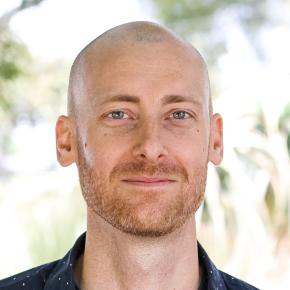It used to be a lot easier to tell truth from error—at least when it came to news media. Tabloids—like Weekly World News and the National Enquirer—with sensational headlines and outlandish articles weren’t taken seriously. “Hilary Clinton Adopts Alien Baby” wasn’t fooling anyone. The line between fake news and real news was a lot clearer. But something changed.
Over time, the primary objective of journalism subtly shifted from informing to entertaining. News sources—like CNN, The New York Times, Fox News, and The Wall Street Journal—rely on big audiences because big audiences bring in big advertising dollars. In The Power of Critical Thinking, philosophers Chris MacDonald and Lewis Vaughn write:
After all, news outlets—whether print, electronic, or online—are businesses with profit margins to maintain, salaries to pay, and shareholders to please. A news organization makes most of its money not from selling its product (news) through subscriptions or direct sales but from selling opportunities for other companies to advertise to the news outlet’s audience.
Consequently, news reports may be skewed—deliberately or not—to satisfy their advertisers, their audience, or their shareholders. Reporters may put opinions before facts. They may play up only one aspect of the story while downplaying the rest. And news that might offend audiences may be ignored altogether.
Given the current state of news reporting, how do we decipher truth from falsehood? I think some critical thinking will help.
Here are three steps we can take to avoid being fooled by fake news.
1. Beware of bias.
Everyone comes to a news report with a set of prior beliefs or opinions. Some of those beliefs are grounded in sufficient reasons; others aren’t. Incidentally, many of us hold beliefs we absorbed from the culture or inherited from our family without sufficient evidence. These prior beliefs cause us to form judgments or opinions before looking at the facts. And if we’re not careful, these biases can create blind spots in our thinking.
Furthermore, we all have a particular view of the world—a worldview. Our worldview shapes our beliefs about how the world is and how it ought to be. This can also affect how we filter news reports—for good or for ill. If our worldview is accurate—matching reality—then it may help us see with more clarity. However, if our worldview is mistaken, it may blind us to the truth.
So, how do we deal with our bias? The first step is acknowledging that you have one. Here are some questions to help you better understand your own biases:
- What are my prior beliefs before reading (watching) the news report?
- Do I want this news report to be true (or false) so my prior beliefs will be vindicated?
- How would I feel if the facts of this news report contradicted my prior beliefs?
- Am I willing to change my prior beliefs if good evidence is provided?
- Is the news report attempting to play toward a particular narrative?
Our biases have the power to trick us into believing fake news. For many people, it’s easier to shoehorn inconvenient facts into our preconceived ideas rather than change our beliefs. But when we fail to account for our biases, we fool ourselves.
2. Read with reasonable skepticism.
Most news reports go beyond merely giving an accurate assessment of events. That’s why I have a rule: Read with reasonable skepticism.
There are two extremes to avoid: extreme gullibility and extreme skepticism. On the one hand, when we read (or watch) something we agree with, we may uncritically accept it as true. For instance, “CNN says it. I believe it. That settles it.” On the other hand, when we read (or watch) something we disagree with, we may universally reject it as false. For instance, “CNN is fake news and cannot ever be trusted.” Both approaches are bad.
Don’t uncritically believe everything you read. But don’t uncritically doubt everything, either. Rather, ask yourself what main claims (or ideas) are being presented, and then look for the evidence of those claims.
Here are some questions to help you think critically about the substance of a news report:
- What specific claims are being presented?
- What are the reasons (or facts) being used to support the claims?
- Are they reporting all the facts or only selected facts?
- Does the news report contain emotional appeals or reporter opinions?
- What are the sources (e.g. peer-reviewed studies, expert testimony)?
Remember, it’s only after you have identified the claims and the reasons for those claims that you can properly evaluate whether or not to believe the claims.
3. Dig for truth.
We ought to be concerned with truth—wherever it leads. Sadly, many people are more concerned with being right than believing right things. Sometimes the truth can be uncomfortable because it bucks up against our tightly held beliefs. Winston Churchill famously said, “Men occasionally stumble over the truth, but most of them pick themselves up and hurry off as if nothing had happened.”
So, what can we do to avoid falling for fake news? Simply put, dig for truth.
This is easier said than done. It may require reading multiple news sources—yes, even the ones you tend to disagree with. You may need to verify a study being cited or fact-check an expert witness. This all takes work, but the payoff is worth it.
Proverbs 18:17 says, “The one who states his case first seems right, until the other comes and examines him.” If we care about truth, we need to begin closely examining news media.
If you want to avoid being taken in by fake news, follow these three steps. First, don’t fool yourself. Do your best to identify the beliefs and assumptions that influence how you filter news media.
Second, don’t be fooled by news outlets. Unfortunately, news is no longer about merely presenting all the facts. Misleading and unsubstantiated claims abound. As a critical thinker, it’s your job to identify those claims so you’re not taken in by them.
Third, follow truth wherever it leads. Be willing to change your mind. Rather than bending reality to fit our beliefs, we must fight with all our strength to bend our beliefs to fit what is true.

